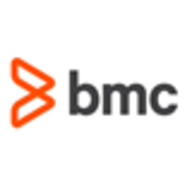


Microsoft Configuration Manager and BMC TrueSight Server Automation compete in IT management solutions. Microsoft Configuration Manager is often preferred for its seamless integration with Microsoft products and effective patching. Meanwhile, BMC TrueSight Server Automation is recognized for its ability to manage a wide variety of operating systems, making it well-suited for diverse IT environments.
Features: Microsoft Configuration Manager offers application deployment, comprehensive patch management, and integration with Windows products, enhancing its remote control and system inventory capabilities. BMC TrueSight Server Automation is advantageous due to its versatility across operating systems, robust patch management, and thorough compliance features, which simplify tasks through features such as phased executions.
Room for Improvement: Microsoft Configuration Manager could benefit from lower CPU and memory usage, enhanced integration with non-Microsoft products, and improved WSUS controls. BMC TrueSight Server Automation should focus on a more intuitive user interface, better agentless operations, and expand its API integrations to facilitate easier resource management and containerization support.
Ease of Deployment and Customer Service: Microsoft Configuration Manager is adaptable for deployment in both on-premises and cloud environments, though its technical support can be inconsistent. BMC TrueSight Server Automation typically operates in on-premises settings, with consistently rated high-quality customer service and technical support, albeit with less deployment flexibility than Microsoft Configuration Manager.
Pricing and ROI: Microsoft Configuration Manager's pricing tends to be high but may be justified by its extensive features and integration, potentially leading to a favorable ROI through automation savings. BMC TrueSight Server Automation also presents high costs, though its comprehensive features and effective support justify the value for diverse organizations. Pricing is a significant consideration for both solutions, requiring careful analysis based on organizational needs.
Everything we've gained from it makes my job easier day after day, and I see value in it as an engineer.
Microsoft Intune not only saves costs by reducing the number of personnel needed but also offers a comprehensive solution for managing laptops, applications, security, individual access, and enrollment.
Importantly, when someone leaves the company, it helps protect document access on their devices.
When a support ticket is submitted, it directly reaches someone with Intune support expertise.
When I contacted Microsoft, they had the same expertise, if not more, which is phenomenal because I felt heard and my problem was solved.
Sometimes, the support provided is excellent, and the representative is knowledgeable, while other times, the service needs improvement.
Their response time and first-level support quality need improvement.
For technical support from Microsoft, I would rate them a nine.
The scalability of Microsoft Intune is ten out of ten.
Ideally, we want to automatically segregate devices based on user properties like primary use, but currently, dynamic groups seem limited to device properties.
It supports organizations with 200 endpoints and those with more than 15,000 endpoints.
The product is suitable for our size, handling 800 devices.
We have not experienced downtime, bugs, or glitches.
It appears Microsoft Intune undergoes changes without informing customers.
Microsoft Intune has been very stable.
There were misconfigurations by our team rather than issues with the product itself.
Features like unlocking devices sometimes fail, and the support offered for other operating systems is insufficient.
There are communication issues, so you might start working with a feature without knowing if it will be deprecated six months from now.
Many third-party companies offer single-pane-of-glass reporting that shows you what your update environment looks like, how your patch is doing, application status, etc., but Intune's reporting is not intuitive.
A better command line interface for Microsoft Configuration Manager would be an additional feature I would to see in the future to make it closer to a perfect score.
I can suggest that Microsoft Configuration Manager should get the Autopilot feature because Autopilot is the main part of Intune, and nowadays everybody is using Autopilot.
Introductory professional services, like a fast-track service, were included with our E5 membership, and there have been no additional costs.
The Intune suite and add-ons, such as batch management and remote help, are costly.
It costs approximately forty euros per user per month.
The setup cost is considered sufficient.
The pricing for Microsoft Configuration Manager is okay for me.
Intune excels in configuration and compliance management for Windows 10, ensuring devices receive timely updates and adhere to organizational standards.
Dynamic groups allow us to set conditions for automatic membership, eliminating the need for user intervention or manual review and ensuring a seamless workflow.
Windows Autopatch is the most valuable because it removes the burden of patch management.
The overall role of BMC TrueSight Server Automation in managing configuration drift brings return on investment through its automation, which helps save me the time and effort of my operations team.
If I want to get a fetch report for anything, such as hardware-related issues or group policy-related issues, I need to fetch the report by using SCCM's scripting language and remediation part.
The most valuable features I find in Microsoft Configuration Manager are mostly patching, deploying software, deploying images, and running custom scripts.
The product valuable for deployment recovery.
| Product | Market Share (%) |
|---|---|
| Microsoft Intune | 9.4% |
| Microsoft Configuration Manager | 11.5% |
| BMC TrueSight Server Automation | 3.1% |
| Other | 76.0% |



| Company Size | Count |
|---|---|
| Small Business | 116 |
| Midsize Enterprise | 46 |
| Large Enterprise | 152 |
| Company Size | Count |
|---|---|
| Small Business | 2 |
| Midsize Enterprise | 5 |
| Large Enterprise | 15 |
| Company Size | Count |
|---|---|
| Small Business | 20 |
| Midsize Enterprise | 13 |
| Large Enterprise | 64 |
Microsoft Intune provides centralized management of mobile devices and applications, ensuring security, compliance, and productivity through integration with Microsoft services like Microsoft 365 and Azure Active Directory.
Organizations use Intune for managing mobile devices and applications, enhancing security and compliance across platforms. With features like single sign-on, conditional access, and zero-touch deployment via Autopilot, it facilitates efficient operations. Intune's scalability, easy enrollment, and capabilities such as remote wipe support diverse device management, offering robust data protection and efficient operation. Despite its features, improvement areas include reporting, compatibility with non-Microsoft devices, and better support for macOS and Linux devices.
What are the key features of Microsoft Intune?
What benefits should users look for in reviews?
In industries such as finance, healthcare, and education, Microsoft Intune is implemented to ensure secure and compliant device management. Companies leverage its capabilities to deploy security policies and manage both corporate-owned and BYOD environments, facilitating a unified approach to data protection and compliance.
BladeLogic Server Automation allows you to quickly and securely provision, configure, patch, and maintain physical, virtual, and cloud servers.
· Threat remediation: Combine with BMC SecOps Response Service to link vulnerabilities to identified patches and create a remediation plan
· Compliance: Integrates role-based access control, pre-configured policies for CIS, DISA, HIPAA, PCI, SOX, NIST, and SCAP, documentation, and remediation
· Provisioning: Supports unattended installs and image-based, script-based, or template-based provisioning
· Configuration: Consistently manage change and configuration activities across a broad range of server environments with one tool
· Reporting: Assess change impact or complete an audit using multiple dashboard views
· Patching: Supports and follows maintenance window guidelines to ensure timely delivery of patches
Microsoft Configuration Manager streamlines IT management with features such as software deployment, patch management, and automation, centralizing operations for Windows environments. Integration with Microsoft products allows efficient oversight of workstations and servers.
Microsoft Configuration Manager provides comprehensive IT management, offering software deployment, patch management, and application pushing. Automation reduces manual tasks, ensuring consistency across systems. Centralized management enables standardized OS deployments, application updates, and configuration integrity. Integration with Microsoft products facilitates seamless operations, while hardware and software inventory, compliance reporting, and remote control functions enhance IT management. Users seek improvements in application deployment for those without deep scripting knowledge and desire better WSUS control, PowerShell and Intune integration, Linux compatibility, and user interface enhancements. Performance improvements are requested for remote user management and third-party application support.
What features enhance Microsoft Configuration Manager?Microsoft Configuration Manager is widely implemented in organizations to manage Windows workstations and servers. It is essential for deploying operating systems and applications, managing software updates, and conducting hardware and software inventories. The tool is crucial for endpoint and configuration management, ensuring compliance, and automating processes like patching and vulnerability management. Industries such as finance, healthcare, and education rely on Microsoft Configuration Manager to keep systems secure and operational, adapting it to address their specific needs and challenges in maintaining diversified IT environments.
We monitor all Configuration Management reviews to prevent fraudulent reviews and keep review quality high. We do not post reviews by company employees or direct competitors. We validate each review for authenticity via cross-reference with LinkedIn, and personal follow-up with the reviewer when necessary.